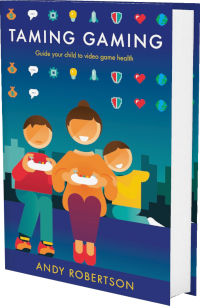 Android
Android iOS
iOS Mac
Mac Switch
Switch Wii
Wii Wii U
Wii U PC
PC PS4
PS4 PS5
PS5 Xbox One
Xbox One Xbox X|S
Xbox X|SWe've documented 26 accessibility features for Guild of Dungeoneering, including Large Text, Low Pressure, No Quick Reactions, No Button Combos and No Repeated Pressing. Its accessibility is strongest in Controls and Visual but it also has features in Reading, Navigation, Getting Started and Audio to reduce unintended barriers.
This report is created with input from accessibility experts and the player community to help people find games that have the accessibility features they require. Once you have found potential games on the database, there are excellent specialist accessibility sites that offer in-depth reviews to guide your purchasing decisions.
External examiner, Angela Hickman Newnham, first checked Guild of Dungeoneering accessibility 17 months ago. It was re-examined by Angela Hickman Newnham and updated 17 months ago.
 Accessibility Notes
Accessibility Notes
The melee and magic attack symbols are red and blue icons of the same size and shape, as are the melee and magic block symbols, and the game relies heavily on your ability to distinguish them by color. Although they do have different images inside the symbols, they are very small and it can be difficult to tell them apart. A core component of gameplay is strategically using melee or magic attack and blocks at the right times, so this can potentially have a large impact on game playability.
 Game Details
Game Details
Release Date: 14/07/2015, updated in 2022
Out Now: Android, Mac, PC, Switch and iOS
Skill Rating: 10+ year-olds
Players: 1
Genres: Adventure, World Building (Fighting, Simulation and Traversal)
Accessibility: 26 features
Components: 2D Overhead, Cards, Grid and Hand-Made
Developer: Gambrinous (@Gambrinous)
Costs: Purchase cost, In-Game Purchases and In-Game Pass
 Controls
Controls
We've documented 6 accessibility features for Controls in Guild of Dungeoneering which deal with how you control the game, different options for alternative inputs and whether you can remap these settings to suit your needs.
Mouse And Keyboard
Can play with the following:
Mouse Alone: Can play with just the mouse/mouse-button/mouse wheel.
Touchscreen
Can play with the following. Additional gestures may be required for games played with a screenreader like VoiceOver.
One Tap Targeted: Can play with touchscreen, tap in specific locations.
Button Combinations
Specific button operation required to play
Holding Down Buttons Optional: Holding down buttons for prolonged periods (a second or more) is not required or can be switched to toggling the action on and off. This is in addition to the movement stick/button which is not considered a hold for this purpose.
Rapid Repeated Pressing Optional: Quick, repeated button pressing (more than 2 times a second) is not required, can be skipped or switched to holding a button to trigger a repeated action.
No Simultaneous Buttons: Only one button or key required at a time, in addition to direction stick(s).
Controller Vibration
Vibration Optional: Controller vibration not used in the game or you can disable it.
Similar Games With More Accessibility Features for Controls
If you want to play Guild of Dungeoneering, but it doesn't offer the Controls accessibility features you require, these similar games extend the Controls accessibility:
- Tenderfoot Tactics (13 Controls Features)
- Crown Trick (11 Controls Features)
- Luck Be A Landlord (11 Controls Features)
- Iris and the Giant (10 Controls Features)
 Difficulty
Difficulty
We haven’t documented any accessibility features for Difficulty in Guild of Dungeoneering which deal with how you can adjust the challenge of play, and whether this is locked once chosen or can be adjusted as you play. The following games are similar to Guild of Dungeoneering, and offer accessibility features for Difficulty:
- Griftlands (2 Difficulty Features)
- Lueur and the Dim Settlers (1 Difficulty Feature)
- Slice & Dice (1 Difficulty Feature)
- Iris and the Giant (1 Difficulty Feature)
 Getting Started
Getting Started
We've documented 3 accessibility features for Getting Started in Guild of Dungeoneering which deal with what support is offered to get started with the game. This includes customising the experience when you first open the game via any onboarding processes it provides as well as tutorials and other assistance when you first start playing.
Assistance Getting Starting
These features aid your play of the game in terms of cognitive load on learning controls, dealing with pressure and coping with the environment and challenges.
Reaction-Time Not Critical: Individual game actions don’t need quick reactions, or there are settings to lower the requirement for quick reactions. This means you don't need to quickly press a button in response to an on-screen prompt, target a fast-moving target or skillfully complete a scenario against the clock.
Low Pressure: Game tasks aren't time-limited or there's a low-pressure mode. This avoids the pressure of being put on the clock for overarching missions, or failing tasks because you didn't reach a destination in time.
No Jump Scares: No sudden loud noises or popping-up scary visuals that unexpectedly appear without warning, or the option to disable them.
Similar Games With More Accessibility Features for Getting Started
If you want to play Guild of Dungeoneering, but it doesn't offer the Getting Started accessibility features you require, these similar games extend the Getting Started accessibility:
- Lueur and the Dim Settlers (11 Getting Started Features)
- West of Loathing (9 Getting Started Features)
- Crown Trick (7 Getting Started Features)
- Ikenfell (7 Getting Started Features)
 Reading
Reading
We've documented 5 accessibility features for Reading in Guild of Dungeoneering which deal with how much reading or listening comprehension is required, how well the game provides visual and audible access to the text and whether subtitles and captions are a good fit for purpose.
Reading Level
How much reading is required to play the game's main path or story and how complex the language is. The presence of voiced characters doesn't reduce this requirement, as it's recorded as a separate datapoint.
Moderate Reading: Moderate reading required. The quantity and complexity of reading are at a level that a high school student (14-year-old) would appreciate.
Text Visibility
Large Clear Text: All essential text is large and clear or can be adjusted to be. The general text used throughout the game in menus, instructions and other key information (excluding subtitles that are assessed separately) is at least 1/20 (46 pixels on 1080 screen) the height on landscape screens and at least 1/40 height on portrait screens. We base this on the full line-height, including the space above and below the letters.
High Contrast Text: Text colour contrasts to the background or can be adjusted to be. The text in menus, instructions and other information is presented in high contrast with a solid background.
Subtitles
All Speech Subtitled (Or No Speech In Game): All spoken content has subtitles, or there is no speech in the game. This means there is no requirement to hear spoken dialogue or narrative to play the game.
Captions
Speaker Indicator: Textual captions indicate who is speaking (or there is only ever one person speaking). This can also be indicated visually in the game with character icons or placing text in speech bubbles next to the person speaking.
Similar Games With More Accessibility Features for Reading
If you want to play Guild of Dungeoneering, but it doesn't offer the Reading accessibility features you require, this similar game extends the Reading accessibility:
- Iris and the Giant (6 Reading Features)
 Navigation
Navigation
We've documented 5 accessibility features for Navigation in Guild of Dungeoneering which deal with how the game provides guidance and assistance to navigate its worlds. These are only for games that have traversal and exploration in 2D and 3D spaces.
Clarity
Large Clear Navigation: The in-game navigation and maps are clear to read. They offer large text and offer markers that are large and of high contrast. Where text or information is small, there are settings to zoom-in and increase visibility.
Clear Mission Objectives: The game provides clear, structured missions with directional guidance and advice on which can be attempted next. This also indicates (ideally on maps where they are provided) which missions can't be attempted because you do not have the appropriate items yet.
Visual Directional Cues: Additional in-game visual cues that signpost where to go next and how close you are to arriving. This can be with camera movement to focus on your destination or important items. It can use light, breadcrumb trails, in-world pointers to identify your mission's target location.
Head-Up Display
Game Map: View a map of the game world during play, with the landscape, points of interest and missions highlighted throughout the entire game. This enables the orientation of the player and the world, confirming a direction of movement and the location of destinations or points of exploration.
Menu Navigation
Digital Menu Navigation: Menu choices with Gamepad can be made without using an analogue stick to guide a cursor to a selection. For example, using D-Pad, buttons or the Stick to change menu selection in a single action.
Similar Games With More Accessibility Features for Navigation
If you want to play Guild of Dungeoneering, but it doesn't offer the Navigation accessibility features you require, these similar games extend the Navigation accessibility:
- Crown Trick (8 Navigation Features)
- The Amazing American Circus (7 Navigation Features)
- Slay the Spire (6 Navigation Features)
 Visual
Visual
We've documented 6 accessibility features for Visual in Guild of Dungeoneering which deal with how you can adjust the visuals to suit your needs, and offer additional information if you can't hear the game.
Contrast
High Contrast: There is high contrast between elements that need to be distinguished from each other, such as characters, interactive objects and game environment, either by default or a high contrast mode. This is different to a slider that increases contrast or brightness between light and dark.
Interactive Elements
Large Game Elements: Game characters and other elements are large and distinguishable. Enemies and player characters are at least 1/6 of the height of the screen. Or there is a zoom feature to make them larger.
Visual Distractions
No Flashes: No flashing strobe effects or you can disable them. This includes the absence of flashing from dramatic visual effects, explosions or weather effects like lightning.
No Screen Shake: No screen shake effect or it is included but it can be disabled. This includes the absence of screen shake for dramatic effect as well as to indicate hits on a target.
Motion Sickness Friendly
Motion Sickness Friendly: Doesn't have 3D movement elements that may trigger motion sickness, like motion blur, depth of field and field-of-vision. Or includes the ability to disable motion blur, depth of field and field-of-vision effects.
Colour Options
Colour Blind Friendly: Game doesn’t rely on colour or can switch to colour blind friendly mode with double coding or similar way to avoid colour dependance.
Similar Games With More Accessibility Features for Visual
If you want to play Guild of Dungeoneering, but it doesn't offer the Visual accessibility features you require, these similar games extend the Visual accessibility:
- Iris and the Giant (9 Visual Features)
- Slay the Spire (9 Visual Features)
- Storybook Brawl (8 Visual Features)
- Griftlands (8 Visual Features)
 Audio
Audio
We've documented 1 accessibility feature for Audio in Guild of Dungeoneering which deals with how you can adjust the audio of the game and whether audio cues compensate for aspects of the game that are hard to see.
Adjustable Audio
Balance Audio Levels: Set music and game sound effects separately. This enables you to select your preference as well as ensure critical game sounds aren't obscured by other audio.
Similar Games With More Accessibility Features for Audio
If you want to play Guild of Dungeoneering, but it doesn't offer the Audio accessibility features you require, these similar games extend the Audio accessibility:
- Fidel Dungeon Rescue (3 Audio Features)
- Loop Hero (3 Audio Features)
- Tenderfoot Tactics (3 Audio Features)
- Mana Spark (3 Audio Features)
System Accessibility Settings
In addition to the accessibility features provided in the game, you can also use system-wide accessibility settings:
Android
Android has accessibility settings including ways to navigate and interact, although not all games support this.
Nintendo Switch
Nintendo Switch has some built-in features, including a lockable zoom, that can be used on all games.
PC
Windows has extensive accessibility features. Some, like colour correction, work with games. Lots of accessibility software can be used with PC games, from voice recognition to input device emulators.
iOS
iOS has a very extensive suite of accessibility settings including ways to navigate with voice and comprehensive screen reading, though most of the features don't work with games.
Read more about system accessibility settings.
Accessibility Report supported by VSC Rating Board, PlayabilityInitiative and accessibility contributors @growingupgamers












